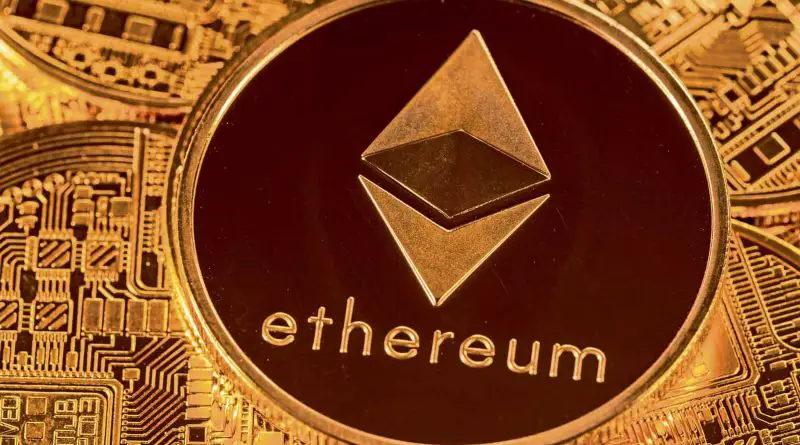Why Ethereum Merge Will Be Game-Changing for DeFi and Crypto Investing
The term "Ethereum Merge" describes the combination of the Beacon Chain, a separate consensus layer based on a proof-of-stake mechanism, and Ethereum's mainnet, the execution layer presently secured by an energy-intensive proof-of-work method.
The “The Merge” upgrade of Ethereum, which is going to take place this week, is causing a lot of enthusiasm in the cryptocurrency market, and with good reason. Not only will it likely be remembered as the most significant industrial event of 2022, but also as a pivotal period in blockchain history.
The term “Ethereum Merge” describes the combination of the Beacon Chain, a separate consensus layer based on a proof-of-stake mechanism, and Ethereum’s mainnet, the execution layer presently secured by an energy-intensive proof-of-work method. Once finished, proof-of-stake verification will be used entirely to add blocks of transactions to the Ethereum blockchain, doing away with the need for Ethereum miners and their significant carbon footprint. The Ethereum Merge has several facets that touch on various facets of the cryptocurrency ecosystem, and it’s merely the first phase in a comprehensive roadmap for Ethereum known as the “Merge, Surge, Verge, Purge, and Splurge.” The end result is that these modifications will significantly increase the scalability of the Ethereum ecosystem.
Ethereum Merge
The estimated completion date of the Merge in mid-September is rapidly approaching, and as with any significant event fueling the crypto narrative, there’s been price movement in ETH on numerous exchanges. Owners of ETH should be aware that this is simply the start of a protracted process rather than a simple upgrade. Having said that, one significant result is that Ethereum will probably garner more attention from the banking industry.
ESG, or environmental, social, and governance, is the primary factor. For institutional investors, who are more focused than ever on ESG concerns, with environmental effect at the forefront, the switch from a power-consuming asset to a power-neutral one is a big deal. One of the main barriers to huge institutions investing more money in the industry has been worries about the carbon footprint of proof-of-work-based cryptocurrencies, which prominently include Bitcoin. The Merge means that particular criticism will be entirely disproved, at least in the instance of Ethereum.
Second, the proof-of-stake mechanism’s nature will considerably increase ETH’s appeal to big money investors by giving ETH holdings a yield-like quality.
Ethereum Blockchain
You must have a basic understanding of proof-of-operation stake’s and future implementation on the Ethereum blockchain in order to comprehend why. After the Merge, validators will lock up (stake) their personal money (in ETH form) as security to guarantee that they carry out the verification carefully and honestly rather than miners doing computations to validate Ethereum transactions. Validators who successfully add blocks to the blockchain in exchange receive payment in exchange for their efforts. Running a validator node on Ethereum will involve staking 32 ETH, which is about US$50,000 at the current exchange rate. However, the advent of staking pools enables smaller ETH holders to participate collectively.
Thus, this new mechanism makes it possible to securely and immediately generate yield on ETH holdings. This is a significant event for investors, and money managers whose primary goal is to produce stable returns with significant upside may find it appealing.
Finally, the entire decentralised finance (DeFi) sector will benefit from ETH staking. The Ethereum network will resemble the U.S. Treasury market in the crypto world due to its scale and reputation. Staking ETH will turn into a de facto “risk-free” rate for cryptocurrencies, acting as a base rate against which various DeFi yield-generating ventures can be benchmarked.
There will be a proliferation of infrastructure built on top of the new proof-of-stake based Ethereum as a result of the Ethereum Merge and future Ethereum upgrades, as well as the creation of layer-2 blockchain’s that facilitate massive scaling up while inheriting the security guarantees of the base layer.
Given the sum of these elements, it is understandable why so many people are bullish on Ethereum and its ecosystem, and even more so on DeFi. The Merge is focused on long-term value rather than rapid price growth.
Traders are advised to purchase the rumour and sell the news, according to an old Wall Street adage. But in the wake of this week’s Ethereum Merge event, investors should exercise caution when looking for quick gains.
It is worthwhile to reflect on the most recent “halving” of Bitcoin, another key cryptocurrency market event. The bitcoin mining incentive is halved every four years. The third incident took place in May 2020, and there was much talk about how it might affect the price. As it turned out, there was little fluctuation in the Bitcoin price prior to its halving. A few months later, the second Bitcoin Bull Run began, propelled by the idea that Bitcoin was digital gold.
With Ethereum, similar dynamics might be at play. The possibility of a one-time event-driven price rise is not the focus of The Merge. Instead, it’s important to realise that this upgrade is just the first in a series of upgrades that will upgrade the network and enable ecosystem participants to unleash enormous value by building on top of it. The narrative will need some time to catch up with reality before there is a significant capital influx into this asset. But I’m sure that the ecology as a whole has a promising future.




